Match the type of cells in Column I with the organs they are part of, listed in
Column IColumn IIP. Chondroblasti. BoneQ. Osteoclastii. BrainR. Microgliaiii. CartilageS. Pneumocyteiv. Lung
Choose the CORRECT combination.
p-iii, Q-I, R-ii, S-iv
P-ii, Q-I, R-iii, S-iv
P-iv, Q-iii, R-ii,
P-iii, Q-ii, R-iv, S-i
To solve the problem of matching the types of cells in Column I with the organs in Column II, we will analyze each cell type and determine which organ they are associated with.
1. Identify Chondroblast (P):
- Chondroblasts are cells that are responsible for the formation of cartilage.
- Cartilage is a flexible connective tissue found in various parts of the body, such as the nose and ears.
- Match: P (Chondroblast) → iii (Cartilage)
2. Identify Osteoclast (Q):
- Osteoclasts are specialized cells that break down bone tissue.
- The prefix "osteo" refers to bone, indicating that osteoclasts are directly related to bone health and maintenance.
- Match: Q (Osteoclast) → i (Bone)
3. Identify Microglia (R):
- Microglial cells are a type of glial cell located in the central nervous system (CNS).
- They act as the first and main form of active immune defense in the CNS, helping to clear out damaged neurons and pathogens.
- Match: R (Microglia) → ii (Brain)
4. Identify Pneumocyte (S):
- Pneumocytes are the cells that line the alveoli in the lungs and are involved in the process of gas exchange.
- They play a crucial role in respiratory function.
- Match: S (Pneumocyte) → iv (Lung)
Final Matching:
- P (Chondroblast) → iii (Cartilage)
- Q (Osteoclast) → i (Bone)
- R (Microglia) → ii (Brain)
- S (Pneumocyte) → iv (Lung)
Correct Combination:
The correct matches are:
- P → iii
- Q → i
- R → ii
- S → iv
Thus, the answer is A.
- Chondroblasts are cells that are responsible for the formation of cartilage.
- Cartilage is a flexible connective tissue found in various parts of the body, such as the nose and ears.
- Match: P (Chondroblast) → iii (Cartilage)
- Osteoclasts are specialized cells that break down bone tissue.
- The prefix "osteo" refers to bone, indicating that osteoclasts are directly related to bone health and maintenance.
- Match: Q (Osteoclast) → i (Bone)
- Microglial cells are a type of glial cell located in the central nervous system (CNS).
- They act as the first and main form of active immune defense in the CNS, helping to clear out damaged neurons and pathogens.
- Match: R (Microglia) → ii (Brain)
- Pneumocytes are the cells that line the alveoli in the lungs and are involved in the process of gas exchange.
- They play a crucial role in respiratory function.
- Match: S (Pneumocyte) → iv (Lung)
- P (Chondroblast) → iii (Cartilage)
- Q (Osteoclast) → i (Bone)
- R (Microglia) → ii (Brain)
- S (Pneumocyte) → iv (Lung)
The correct matches are:
- P → iii
- Q → i
- R → ii
- S → iv
Topper's Solved these Questions
Similar Questions
Match the organs in Column I with the words listed in Column II.
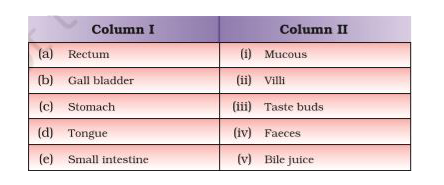
View SolutionMatch the species in Column I with their respective feature of body organisation in Column II
Column IColumn IIP. Molluscai. PseudocoelomQ. Annelidaii. RadulaR. Nematodaiii. Radial symmetryS. Echinodermataiv. Segmentation
Choose the CORRECT combination.
View Solution
Knowledge Check
Match the type of cells in Column I with the organs they are part of, listed in Column II:

Choose the CORRECT combinationAP-iii, Q-i, R-ii, S-ivBP-ii, Q-i, R-iii, S-ivCP-iv, Q-iii, R-ii, S-iDP-iii, Q-ii, R-iv, S-iMatch the list of items of Column I with Column II-
 AA-(IV), B-(III), C-(II), D-(1)BA-(1), B-(II), C-(III), D-(IV)CA-(IV), B-(II), C-(III), D-(1)DA-(I), B-(III), C-(II), D-(IV)
AA-(IV), B-(III), C-(II), D-(1)BA-(1), B-(II), C-(III), D-(IV)CA-(IV), B-(II), C-(III), D-(1)DA-(I), B-(III), C-(II), D-(IV)Match the following in column I with column II and choose the correct combination :
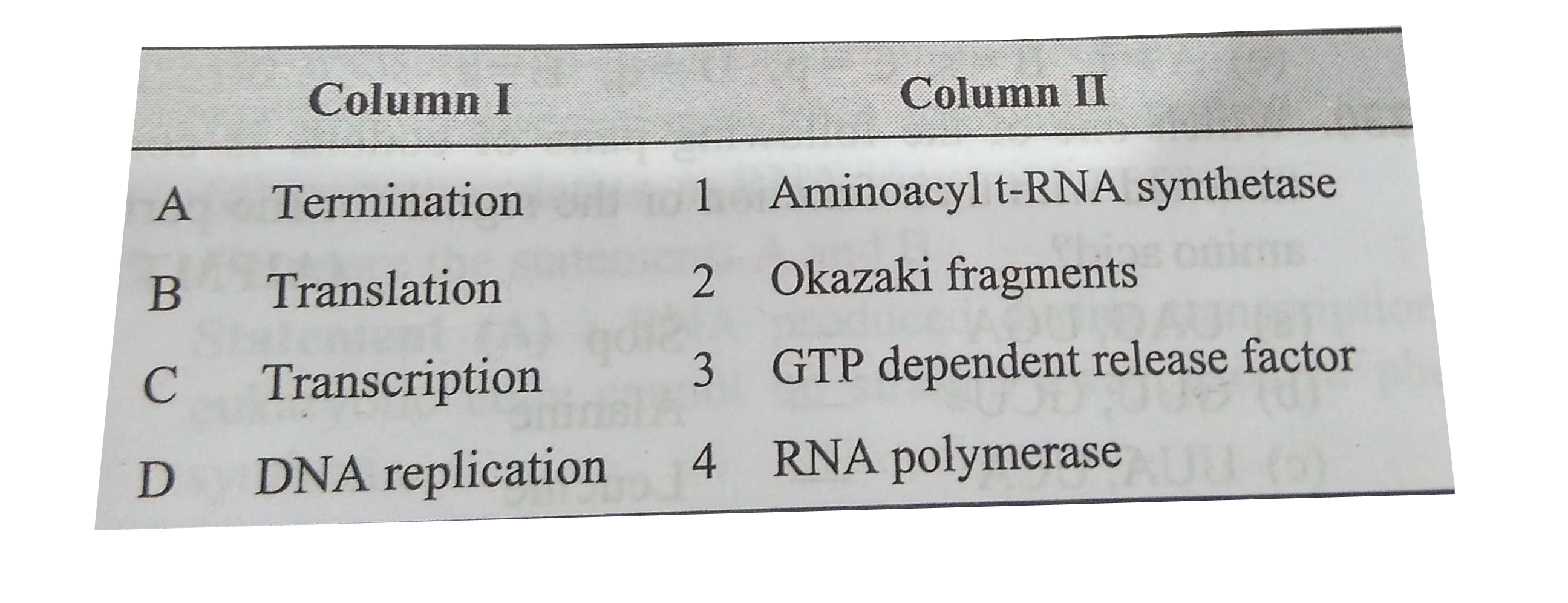 AA=2,B=3,C=1,D=4BA=1,B=4,C=4,D=3CA=3,B=1,C=4,D=2DA=4,B=2,C=1,D=3
AA=2,B=3,C=1,D=4BA=1,B=4,C=4,D=3CA=3,B=1,C=4,D=2DA=4,B=2,C=1,D=3
Match the terms in column I with those in column II :
Column IColumn II(a)Compound epithelium (i) Bone(b)Osteocytes (ii) Skin
View SolutionMatch the compounds listed in column -I with the characteristic(s) listed in column-II.
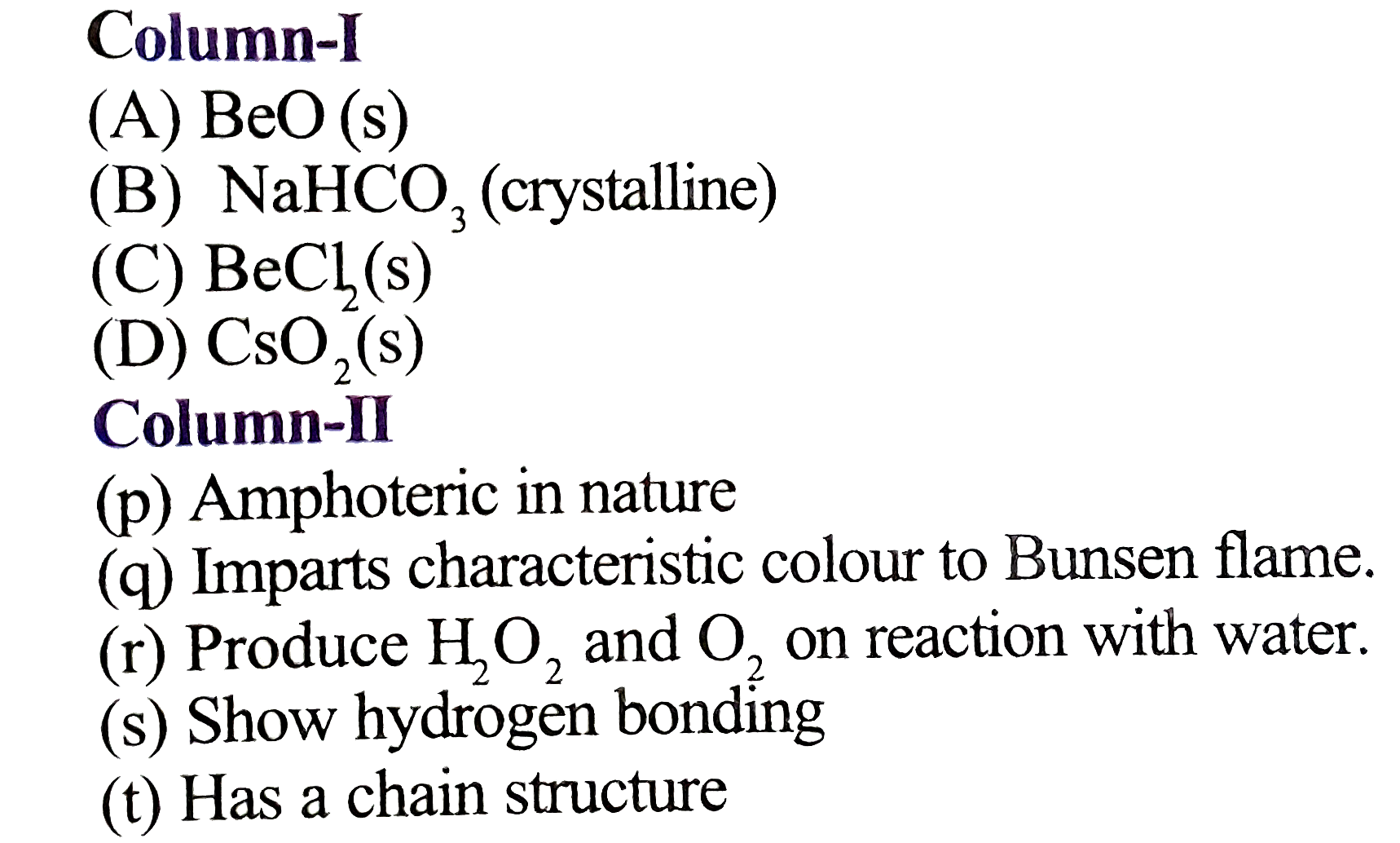
View SolutionMatch the complexes listed in column-I with characteristic(s) listed in column-II.
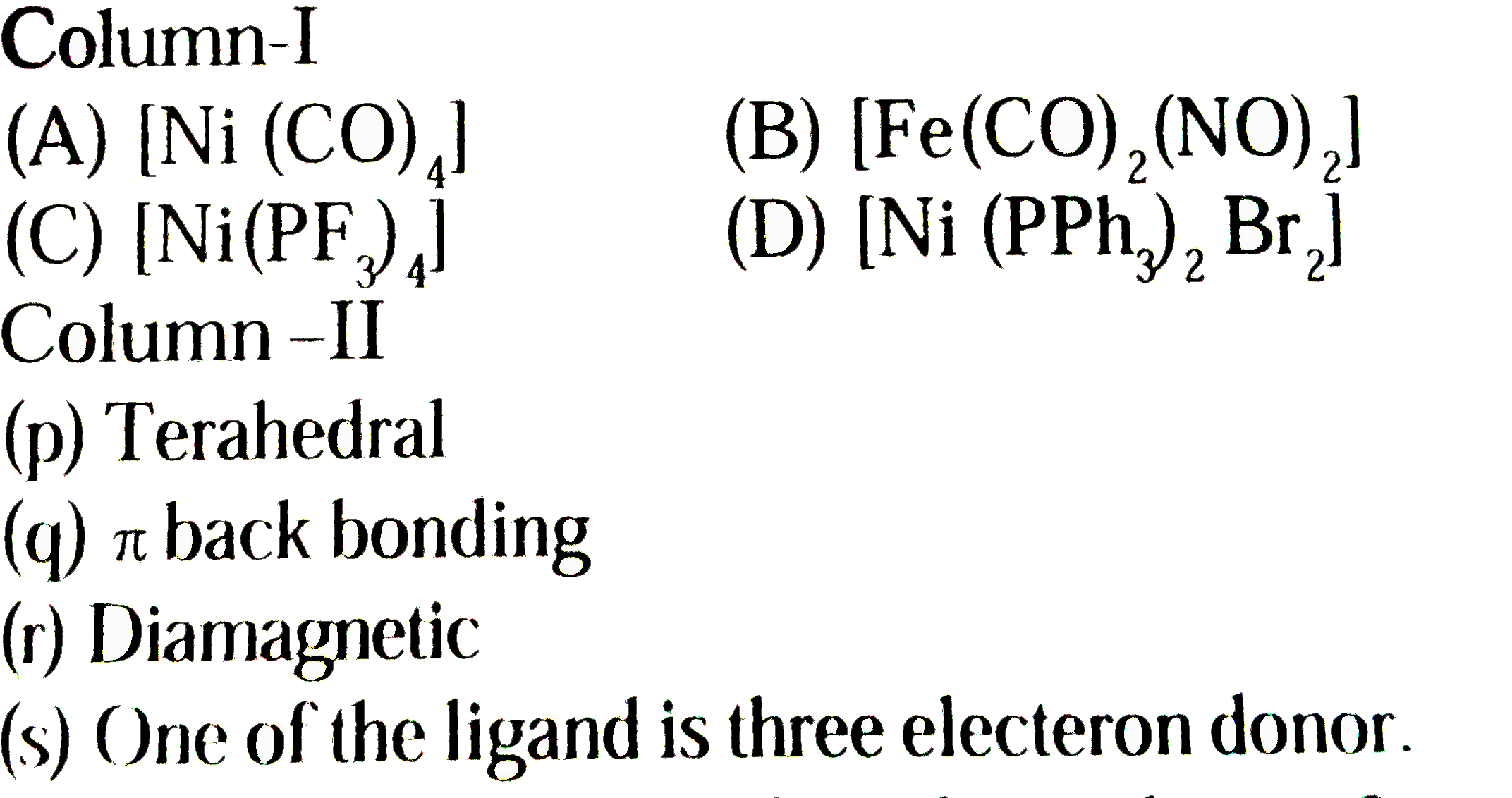
View SolutionMatch the plants in Column I with their features listed in Column II ,III & IV
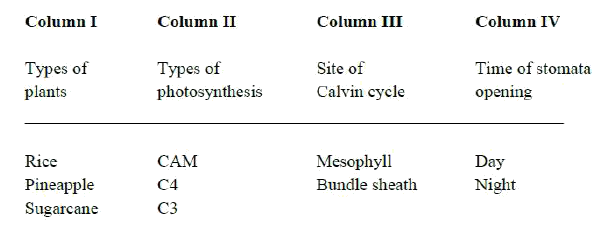
Choose the CORRECT combination .
View SolutionMatch the following in column I with column II and choose the correct combination
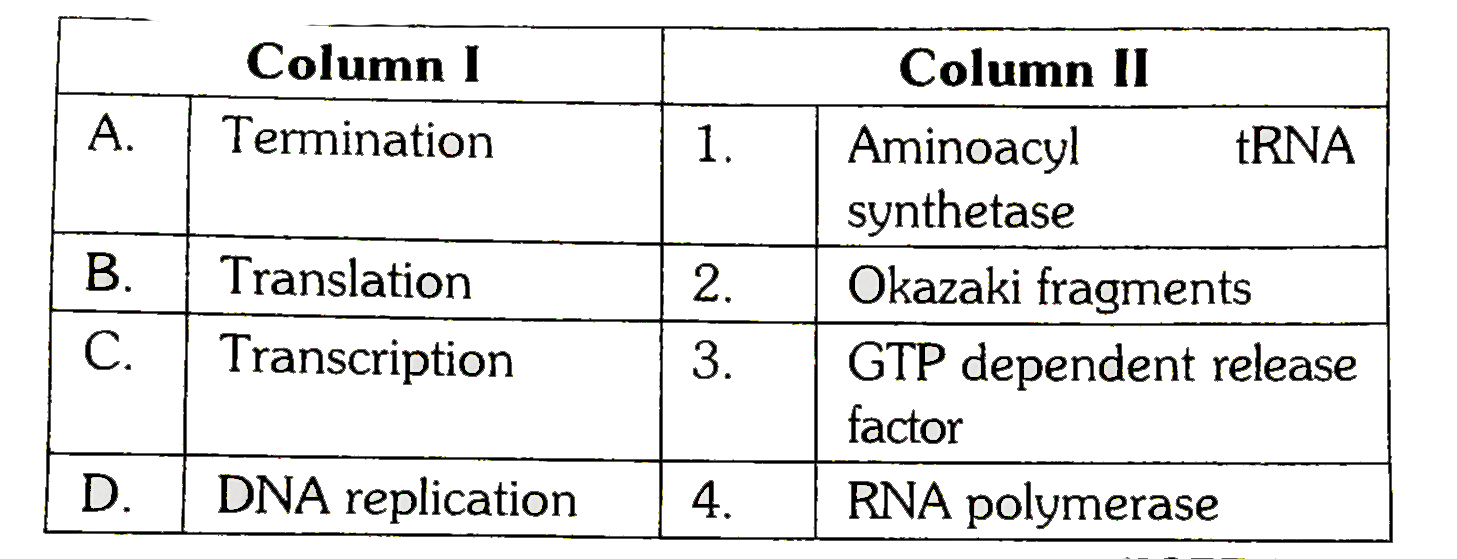
View Solution

